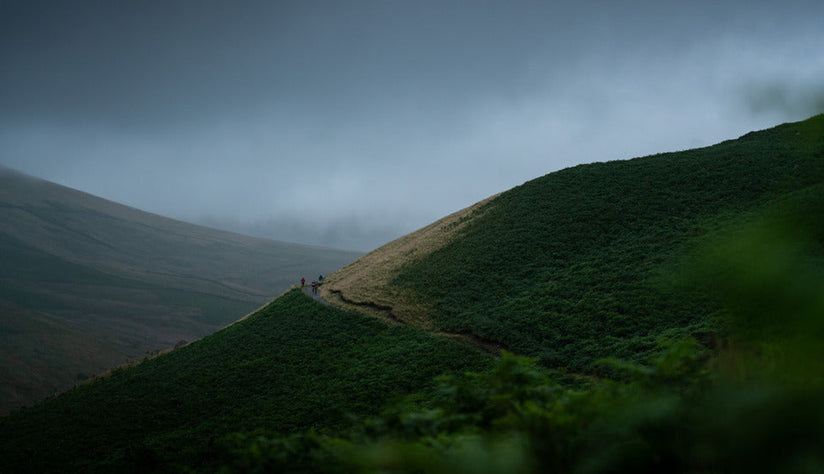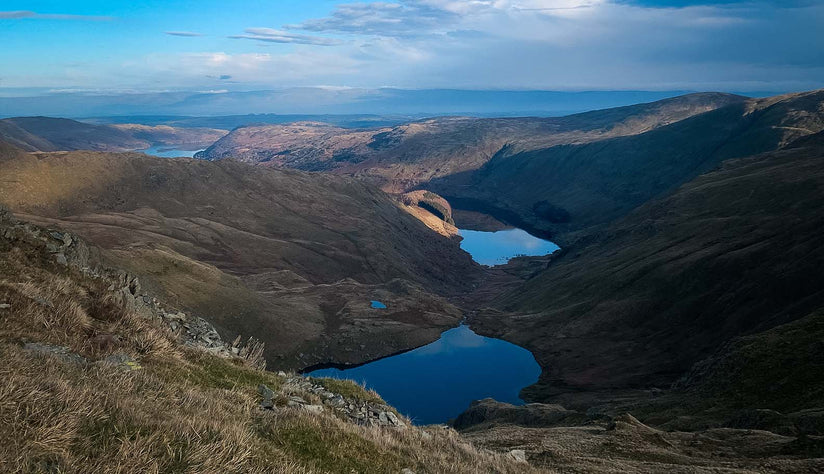Matt Cooper is a Montane athlete, qualified Mountaineering Instructor, Mountain Leader (Winter and summer), and a member of Ogwen Mountain Rescue team (OVMRO). He is highly experienced in navigating at night and wants to help empower you to do so safely.
Navigating at night can be a daunting experience, especially if you had every intention of being off the mountain before dark. Whilst navigating at night may seem like a huge step up from your average walk in the day, developing these skills is incredibly useful for everyone who finds themselves walking in the colder months when the days are much shorter.

Essential Equipment & Planning
It doesn't matter how skilled you are outdoors - if you don't pack suitable warm clothing, a head torch and the skills to use a map and compass - night navigation will be pretty useless. Make sure you carry sufficient layers to keep you going on the move, my favourite is the Montane Respond Jacket which offers a warm layer that works well on the move.
The quality of torches nowadays is pretty impressive too with a 500+ lumen headtorch coming in as little as £40. Remember though - battery life is just as important, so don't just look at the brightness, a torch with a good burn time of 4-6 hours is very useful.
Most people who end up navigating in the dark never intended to. Check the forecast, choose an objective that's not too big, and make sure you leave enough time to get back to the car before it gets dark. If you're out climbing or scrambling, consider the possibility of getting held up by another party, or poor weather slowing you down.

Navigation Tips
Get slick in the daytime
First of all, you need to know the basics of navigation (discover this beginner's guide to map reading to get started). If you can't read a map or use a compass in the day - the dark mountains won't be the best place to learn. Practice using your map in the daytime and get used to using a compass bearing for direction. If you don't know how to do this consider undertaking a course with a qualified mountain professional.
Keep it safe and simple
Where are you now and where are you heading to? Are there any cliffs on your journey? Is the object you are aiming for large, or could it be easy to walk past? Consider walking a longer distance if it offers an easier way off the hill - following (hand railing) fences and streams/rivers can be much easier than trying to aim for some small lump or cairn (pile of rocks) in the dark. Make it easy for yourself and aim for objects or features that are harder to miss.
Get slick at bearings
In the daytime, you would normally use features and objects to know whether you're walking in the right direction, in the dark they all disappear. Being able to accurately take a compass bearing from the map and walk on it is essential to walking in the dark. Once you have your bearing locked into your compass aim for something in your head torch range and walk to it, when you get there spot something else in the distance and keep leap-frogging from point to point, this is the easiest way to walk on a bearing in the dark.

Distance and duration
So now you're a compass expert the next skill you need to master is measuring distance, so you know how far to walk on your bearing. Most compasses will have a roamer which is great for measuring distance on the map. Choose the scale on your roamer to match the scale of your map and this will give you a measurement of how far to walk. As a rough guide, somebody walking around 4kmph (a pace you can still talk) will cover around 1km every 15 minutes. Use this as a rough guide.
Phones and Apps
When I talk about using phones to navigate - the older mountain walker may look at you in disdain - for the modern walker though, it's now an essential bit of kit. Consider using a more specific navigation app like Outdoor Active or OS Maps as they use Ordnance Survey maps and have features like distance measuring tools, planning options, and route overlays. Don't forget, the more apps you use the less battery life you have, consider taking a battery pack or nominate somebody in the group to use their phone for navigation and somebody else for an emergency phone. If you need to call for help at any point, battery life is vital.

Mountain Safety
The above tips will hopefully give you some idea of what to do and the skills you need to gain to navigate in the dark. If you find yourself lost in the mountains and you can't relocate, you must know when to quit and call Mountain Rescue. MR teams are experts at dealing with those lost in the mountains and walking lost people off the hill in the dark is much nicer than dealing with a more serious accident. Don't forget, to call Mountain Rescue dial 999, ask for the police then Mountain Rescue.















